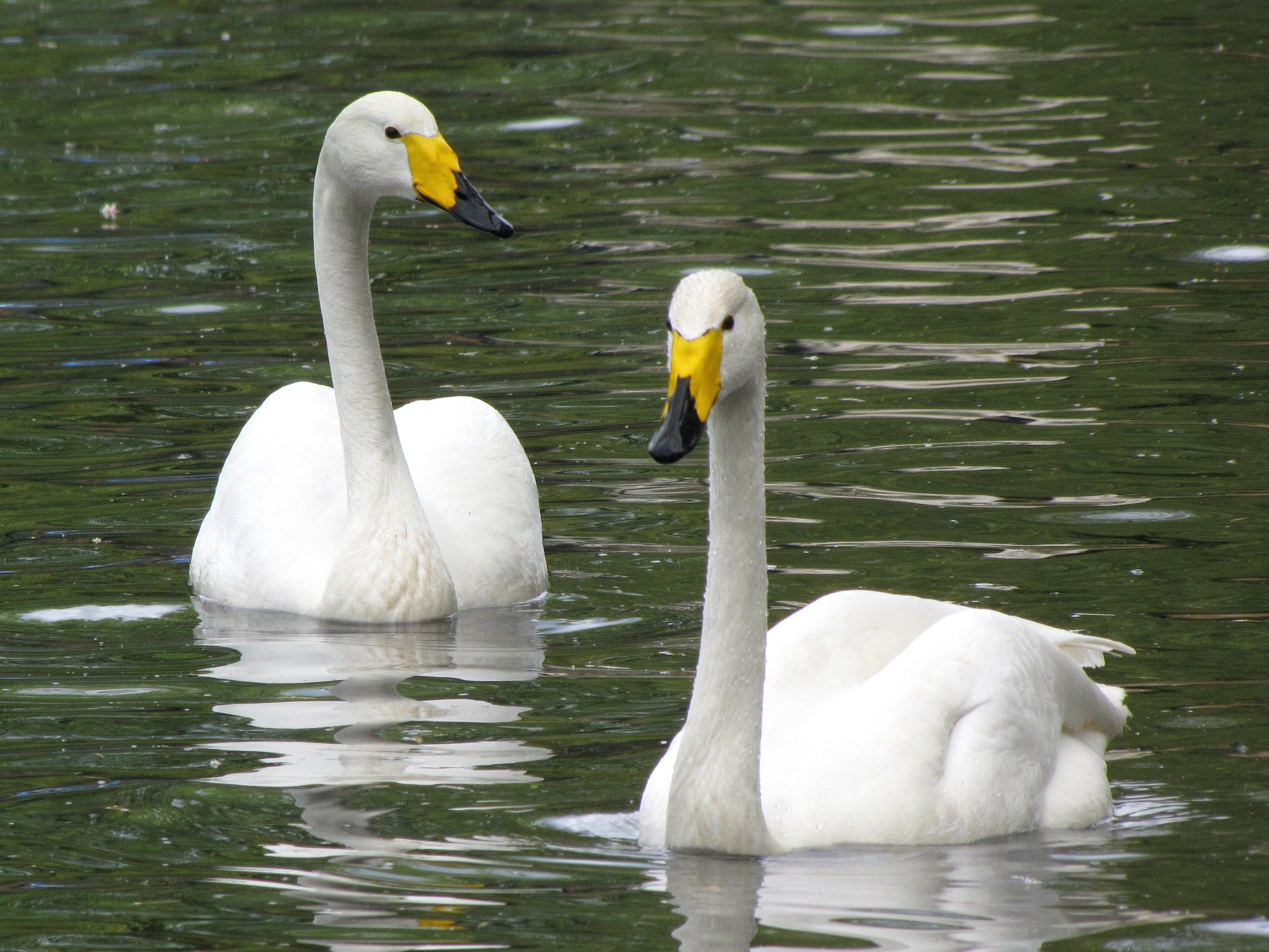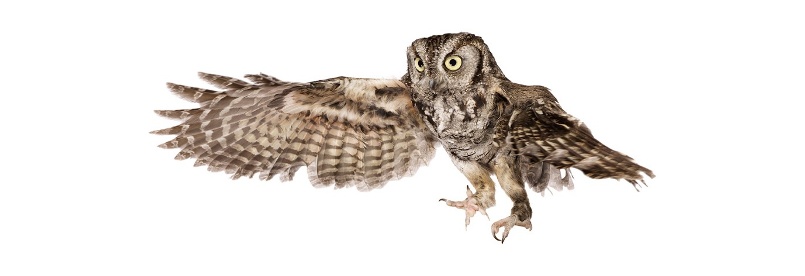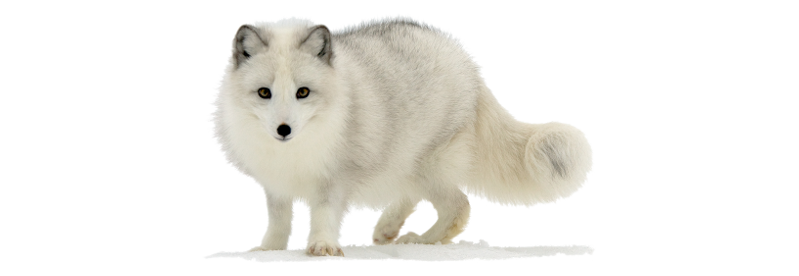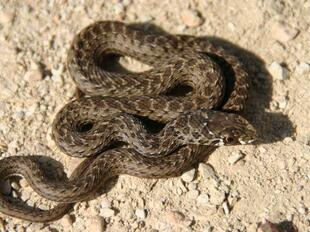
Whooper swan(Cygnus cygnus)
Phylum —chordata
Class — aves
Order — anseriformes
Family — anatidae
Genus – cygnus
Appearance
Both male and female whooper swans have white plumage with black webbed feet and legs. Their beaks are orange-yellow at the base with a black tip. The markings on their beak can be used to differentiate between individuals. In the spring and summer, adults may develop dark neck plumage due to their iron-rich environment. Juveniles have downy grey-brown plumage with a pink and black tipped beak.
Adult whooper swans are large birds, with an average length of 1.4 to 1.65 m and a wingspan of 2.05 to 2.75 m. Male weights range from 7.4 to 14 kg with an average of 9.8 kg, which is much heavier than the female weight range of 8.2 to 9.2 kg. Aside from body mass, males can also be differentiated from females by their longer and thinner necks.
Habitat
Whooper swans have an extensive geographic range and can be found within the boreal zone in Eurasia and many nearby islands. Boreal conditions often include cold winters, short summers, and dramatic seasonal temperature variations. Whooper swans breed in countries such as Iceland, Ireland, and Great Britain and migrate in the winter to countries such as China, Korea, and Japan. Some migratory populations can be found in India and western North America.
Behavior
Whooper swans are territorial during the summer but social during the winter. Whooper swans can be found living in flocks near wetlands. Larger flocks of more than 40 individuals are more common from October to November, whereas smaller flocks of fewer than 30 individuals are more common from January to early spring. There is a social hierarchy with larger families at the top, monogamous pairs in the middle, and unpaired individuals at the bottom. Dominant birds can feed for the longest period of time, and individuals often seek to join flocks for added protection. Aggressive males may also cause one family to be more dominant over another family of equal size. Cygnets rarely initiate flight, but they participate in pre-flight signaling to communicate with their parents.
Diet
Whooper swans feed in shallow bodies of water and consume aquatic plants and roots. Cygnets feed on small insects and other invertebrates to meet their high protein requirements for proper growth and development.
Reproduction
Whooper swans pair for life, and their cygnets stay with them all winter; they are sometimes joined by offspring from previous years. Their preferred breeding habitat is wetland, but semi-domesticated birds will build a nest anywhere close to water. Both the male and female help build the nest, and the male will stand guard over the nest while the female incubates. The female will usually lay 4–7 eggs (exceptionally 12). The cygnets hatch after about 36 days and have a grey or brown plumage. The cygnets can fly at an age of 120 to 150 days.
Adult whooper swans can live for decades.
In captivity
To keep swans, you need a reservoir with clean water. By clean waternon-toxic and non-rotten water is meant. It doesn't have to be transparent. The reservoir can be of any size, but the larger it is, the more comfortable it will be for swans to live and the chance of getting offspring increases. The minimum size of the enclosure for a pair of swans is 3x3 meters. The minimum size of the pool is 1x1 meter. Even in such cramped conditions, swans can exist. The smaller the size of the pool, the more often you have to change the water there. In a 2-meter pool with a depth of 50 cm, with the content of a pair of swans, the water will have to be changed every day. In a natural pond, the water does not need to be changed, it just needs to be cleaned sometimes. It is advisable to carry out general cleaning of a small pond every year. If the pond is large, you can do it every few years.
In winter, when the temperature drops below zero, it is necessary to protect the reservoir from freezing. There are two ways to solve this problem:
- A compressor or a pump is installed on the reservoir and a system of pipes for pumping water or air, thus creating a constant movement of water, which prevents it from freezing.
- In winter, birds can simply be moved to a heated room with a small pond. You can divide the winter aviary into 2 zones, where only the pool area is heated, and the walking area is left on an unheated (outdoor) territory. The area of the zone range should be calculated not less than 5 square meters for each bird.
At temperatures below -15°C, it is better to transfer swans to a heated room with a temperature above -15 °C.
In captivity the diet of swans consists of grains: corn, wheat, barley, millet – this grain should always be in feeders with round-the-clock access to them for birds. In fact, swans are reluctant to eat dry grain, but it is necessary in their diet (especially in winter). In the spring and summerin the grain mix, it is necessary to add chicken feed enriched with protein, which is necessary for birds during the breeding season.
Juicy foodshould be the second half of the swan's menu. In winter, this is cabbage, lettuce and carrots. In summer, it is a variety of herbs from juicy herbs, such as: clover, dandelion, plantain. A small amount of grass is better to throw directly into the water. Swans eat a lot of grass, and if the reservoir has access to vegetation, the swans are happy to go ashore and graze, while eating the most palatable plants.
You should not give bread to swans, they often get sick from it and later die.
During the day, the swan drinks up to 5-6 liters of water. And this is the main reason why the water in the reservoir should be clean.
Breeding swans in captivity is not particularly difficult. In the center of the reservoir (if it is large enough), it is better to install a small island or raft with a minimum size of 3x3 meters. If it is a raft, it must be stable enough (to hold the weight of an adult). It is not recommended to build various structures on a raft. You can build a shelter from the sun and rain, no more. For a nesting pair on such a raft, in April (as soon as the ice on the rivers comes down), you need to put a large armful of hay, the rest of the work on the nest arrangement will be done by the birds themselves. In May, the female lays eggs. When the offspring appear, it is necessary to increase the amount of feed and put an additional feeder on the island.
During the breeding season, a pair of swans becomes aggressive towards other birds, so if there are other small birds in the pond, it is better to temporarily isolate them from the swans.
 Russian
Russian
 English
English
























